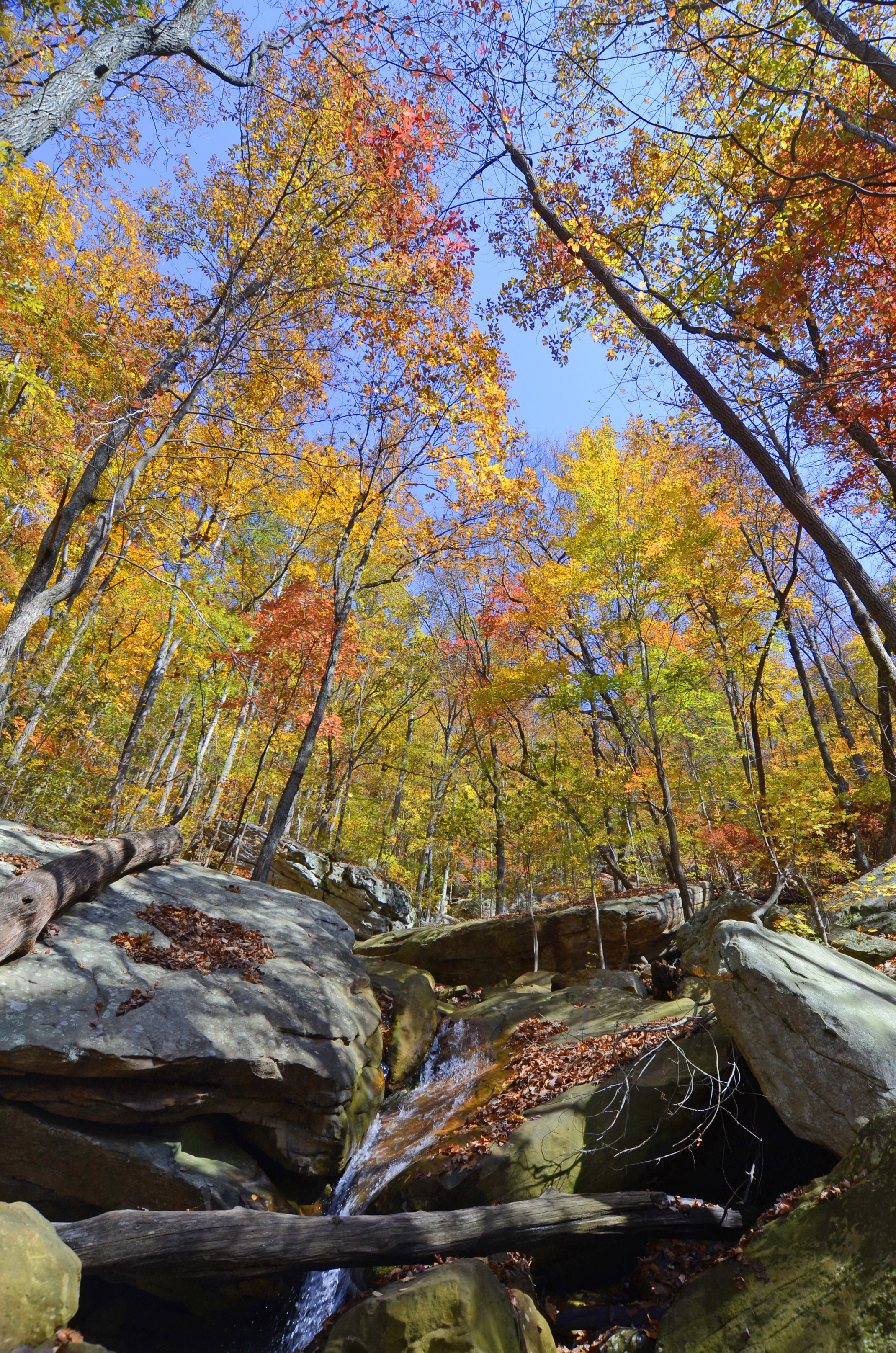Armed with an electric leaf blower and tethered by an orange extension cord, Bob Thomas, 78, waded into a sea of leaves on his Lookout Mountain driveway Saturday afternoon.
"I'm just doing this so that you can see where you're going," he said with a chuckle, his white hair tucked under a baseball cap. "You can't keep up. I've already done this two or three times."
At least 36 large deciduous trees tower over his property, and most dropped their leaves in the last two days -- creating a deluge of fall foliage.
"I've been up here 40 years, and I've never seen as many acorns and leaves," he said. "The trees are just loaded."
The Tennessee Valley was aflame with color this week as green leaves transformed into bright oranges, yellows and reds. The whine of leaf blowers filled neighborhoods.
Terry McDonald, public affairs officer for Cherokee National Forest, said most of the forest already has hit the peak of color this year.
He said the leaves are peaking earlier this year than the last two years, but historically, it's happening at about the typical time. The last two years peaked late.
"And I'm talking about Cherokee National Forest," he added. "It can vary just a few miles away."
The process of color change is sparked when leaves get less sunlight as the days get shorter, said Dennis Bishop, arboretum curator at the Chattanooga Arboretum and Nature Center.
"Chlorophyll production starts to decline as day length declines, because there is not enough sun," he said. "The color change is really the leaf going through a death cycle."
Exactly when a leaf starts to transform and die also depends on moisture, temperature and genetics, Bishop said. He agreed that this year's peak is happening about the normal time.
Lookout Mountain resident Larry Reed used his yardful of leaves to make mulch for his garden. He'd filled seven big black garbage bags with mulch by midafternoon Saturday, and still had a ways to go.
Bishop said leaves make excellent mulch.
"They're the natural mulch of the forest," he explained. "We have all those mulches we buy, but there's nothing better than what nature provides -- leaves."
McDonald said the forest's colorful peak is drawing some visitors to the park solely to drive around and take in the sights. He hopes other visitors will come out before the leaves fall.
"When this peak passes, there will still be pockets of color," he said. "The peak will last for a week to 10 days. It was starting to peak last weekend, so I would encourage people within the next week to come see it in order to get the full experience."
Reed said he expects to do at least one more round of leaf cleanup in his yard, especially because there's one tree that always drops late. He scanned the pile he'd created Saturday.
"Gosh," he said. "If you piled it all up, you could fill a dump truck with this."

